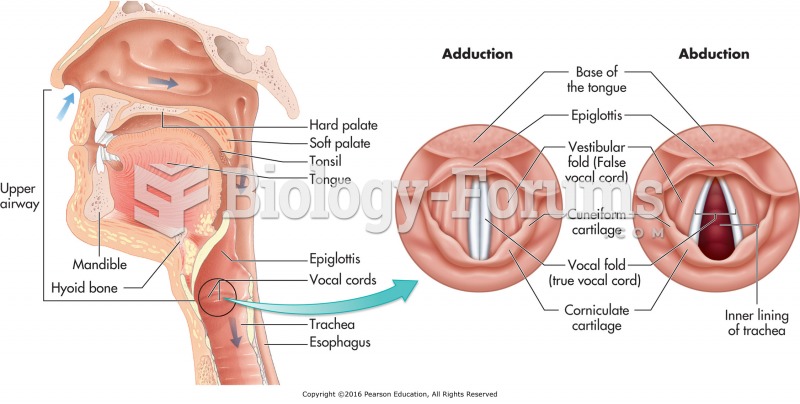|
|
|
The Centers for Disease Control and Prevention has released reports detailing the deaths of infants (younger than 1 year of age) who died after being given cold and cough medications. This underscores the importance of educating parents that children younger than 2 years of age should never be given over-the-counter cold and cough medications without consulting their physicians.
Immunoglobulin injections may give short-term protection against, or reduce severity of certain diseases. They help people who have an inherited problem making their own antibodies, or those who are having certain types of cancer treatments.
Egg cells are about the size of a grain of sand. They are formed inside of a female's ovaries before she is even born.
Aspirin is the most widely used drug in the world. It has even been recognized as such by the Guinness Book of World Records.
After a vasectomy, it takes about 12 ejaculations to clear out sperm that were already beyond the blocked area.







